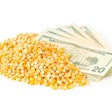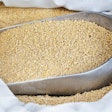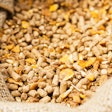
Leave the writing to the professionals if you want to grow your audience and get your message across.
Writing is easy. We all write, and we do it every single day: text messages, emails, letters, shopping lists and so on.
Writing for a captive audience (your family’s daily to-do list, for example) is easy enough. But those who choose to read a technical magazine (such as Feed Strategy, for example) are not a captive audience. As such, they have to be convinced their time will be rewarded accordingly. As technical magazines are not read for entertainment or release from stress and boredom, they must offer some other value to their readers. And, value is the secret that distinguishes successful publications from those that come and go.
Magazines are based on an editor who directs the magazine’s content and writers who provide articles for such content. Writing an article is not an easy proposition, especially if you want to accomplish a double goal: that of providing value to the reader and at the same time helping your message get across in a non-offensive way.
An article published in a successful magazine is a great deal for any business as their image increases, their brand becomes more recognized, and their audience (read: potential customers) expands exponentially. Thus, many forward-looking businesses attempt to have articles published in successful technical magazines. The majority of them fail miserably because they fail to understand the basic principle outlined above: readers are no longer captive audience; the internet made that happen long ago.
When your sales and/or marketing people visit a potential customer, or when you organize an event with speakers, you have a semi-captive audience. Nevertheless, in these cases, you can present your marketing material, talk about your company, products, successes, people, clients and whatever you deem important. Whether this approach works is another case, left for another discussion. But that is what you do when you address people sitting across from you. In fact, this is what is expected of you, and it is only the way that this message transfer attempt is made that can be criticized.
Reward your audience
But, when the audience is free and they come to you on their own free will, they have to be rewarded. And in the case of magazine articles, this means some free and meaningful technical information that they can take back to their business and use to make their work better, easier and more profitable.
For this simple reason, advertorials have and will always fail. A non-captive audience does not read advertorials simply because these publications are akin to mystery tales with the ending written on the front cover. There has never, never been an advertorial where there is a negative ending such as, “our product does not work, after all.”
If you, as a reader, are going to read a mystery story, you need to have all options open at least in the beginning, or if you suspect the ending, then at least you need to know you will enjoy the storyline. In our case, as we are not in the entertainment business, this reward is free and valuable technical information. So, blending the two (your message and rewarding value) is the only way to have advertorials even skimmed through.
Focus on science
If you are still bent on writing an article, again, do not write an advertorial based on your marketing material. In fact, throw away all your marketing material and focus on the science behind your products.
Say you are selling an enzyme, such as phytase. Writing an article about how your own phytase is better than any other phytase is what everyone expects from you. In fact, your readers probably have already been visited by your sales/marketing teams and they can recognize the graphs, tables, reasoning and approach you are going to use in your advertorial article.
Instead, think about how someone who already knows a lot about phytase would benefit by knowing more about auxiliary information on phytase. And phytase is about phosphorus (mainly, no?)
So, talk – or rather write – about the scarcity of phosphorus and its cost, its detrimental role on being excreted into the environment, the real requirements of animals, and why not any new advances of phytase on how it helps other nutrients being released, or how phytase can work better with certain, say, organic acids – or not. Just, think outside the box and help your readers become better at using your line of products.
The best way to advertise your products though articles is not to talk about your specific products but about the brilliance of your science as it shines through your people. Let marketing do the direct marketing, while you focus on providing some really useful information.
Talented writers needed
Sending an indirect message that promotes your interests is perhaps the most difficult writing exercise. Crossing the line to the advertorial approach is the easiest mistake to make, and to avoid that, you need talent or at least some training on writing. Nobody should expect technical or marketing people to be writers as well. These are all different professions.
Again, we are referring to material directed to non-captive audience; this is perhaps the most difficult audience, as information flows across the internet with an unprecedented speed that is only going to increase. So, training on the intricacies of writing should be considered an investment, especially as most companies now invest on having their own newsletters, websites, and even magazines.

















